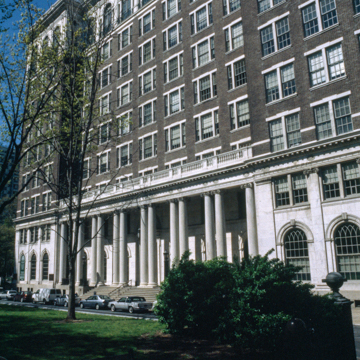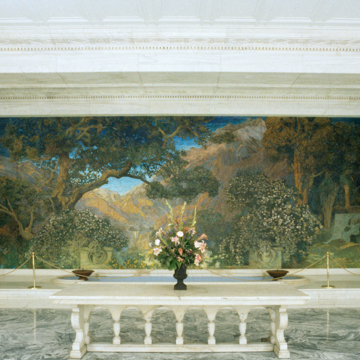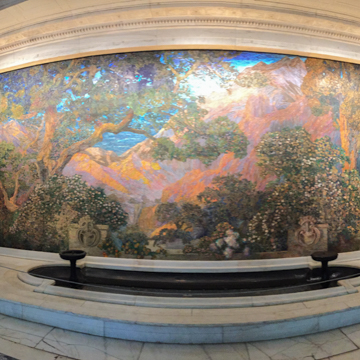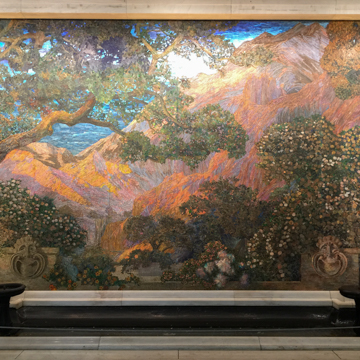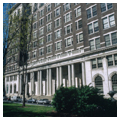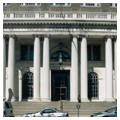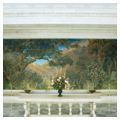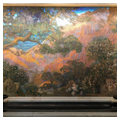The Curtis Publishing Company building is Beaux-Arts in character but Georgian Revival in color and detail. It juxtaposed the scale of a modern publishing empire against the diminutive scale of Independence Hall across the street. Built to house the editorial staff and some of the production processes of Ladies’ Home Journal, Saturday Evening Post, and Jack and Jill, it was presided over by Edward Bok, the self-promoting son-in-law of the company's founder, Cyrus Curtis. The new building represented Bok's immense ambition, both in its scale and in its decor. In the Beaux-Arts marble-clad entrance hall is a spectacular Tiffany favrille glass mosaic entitled The Dream Garden, in which each piece of glass represents a brush stroke of the original painting by Maxfield Parrish. Pendant in material and scale to the Curtis Building is the Public Ledger Building that stretches north to Chestnut Street. Designed by Horace Trumbauer in 1923, it replaced John McArthur Jr.'s mansard-roofed, Second Empire building for the Public Ledger, George Childs's politically incorruptible newspaper.
You are here
Curtis Publishing Company
If SAH Archipedia has been useful to you, please consider supporting it.
SAH Archipedia tells the story of the United States through its buildings, landscapes, and cities. This freely available resource empowers the public with authoritative knowledge that deepens their understanding and appreciation of the built environment. But the Society of Architectural Historians, which created SAH Archipedia with University of Virginia Press, needs your support to maintain the high-caliber research, writing, photography, cartography, editing, design, and programming that make SAH Archipedia a trusted online resource available to all who value the history of place, heritage tourism, and learning.











